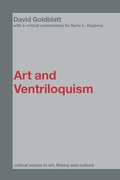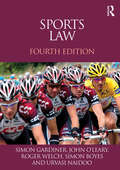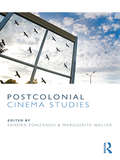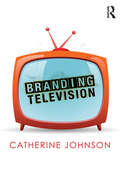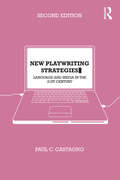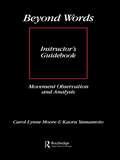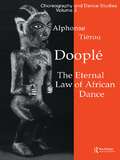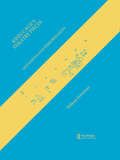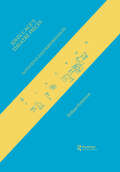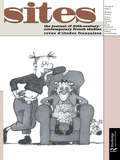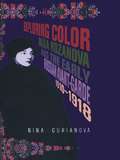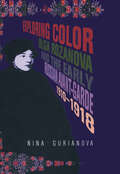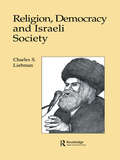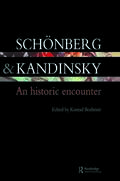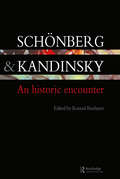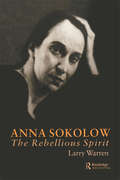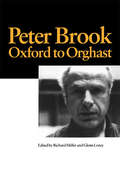- Table View
- List View
Art and Ventriloquism (Critical Voices in Art, Theory and Culture)
by David GoldblattThis exciting collection of David Goldblatt's essays, available for the first time in one volume, uses the metaphor of ventriloquism to help understand a variety of art world phenomena. It examines how the vocal vacillation between ventriloquist and dummy works within the roles of artist, artwork and audience as a conveyance to the audience of the performer's intentions, emotions and beliefs through a created performative persona. Considering key works, including those of Nietzsche, Foucault, Socrates, Derrida, Cavell and Wittgenstein, Goldblatt examines how the authors use the framework of ventriloquism to construct and negate issues in art and architecture. He ponders 'self-plagiarism'; why the classic philosopher cannot speak for himself, but must voice his thoughts through fictional characters or inanimate objects and works. With a close analysis of two ventriloquist paintings by Jasper Johns and Paul Klee, a critical commentary by Garry L. Hagberg, and preface by series editor Saul Ostrow, Goldblatt's thoroughly fascinating book will be an invaluable asset to students of cultural studies, art, and philosophy.
Art and Ventriloquism (Critical Voices in Art, Theory and Culture)
by David GoldblattThis exciting collection of David Goldblatt's essays, available for the first time in one volume, uses the metaphor of ventriloquism to help understand a variety of art world phenomena. It examines how the vocal vacillation between ventriloquist and dummy works within the roles of artist, artwork and audience as a conveyance to the audience of the performer's intentions, emotions and beliefs through a created performative persona. Considering key works, including those of Nietzsche, Foucault, Socrates, Derrida, Cavell and Wittgenstein, Goldblatt examines how the authors use the framework of ventriloquism to construct and negate issues in art and architecture. He ponders 'self-plagiarism'; why the classic philosopher cannot speak for himself, but must voice his thoughts through fictional characters or inanimate objects and works. With a close analysis of two ventriloquist paintings by Jasper Johns and Paul Klee, a critical commentary by Garry L. Hagberg, and preface by series editor Saul Ostrow, Goldblatt's thoroughly fascinating book will be an invaluable asset to students of cultural studies, art, and philosophy.
Sports Law
by Simon Gardiner John O'Leary Roger Welch Simon Boyes Urvasi NaidooLong established as the market leading textbook on sports law, this much-anticipated new edition offers a comprehensive and authoritative examination of the legal issues surrounding and governing sport internationally. Locating the legal regulation of sport within an explicit socio-economic context, this refocused edition is divided into four core parts: Governance & Sport; Commercial Regulation; Sports Workplace; and Safety in Sport. Recent developments covered in this edition include: EU competition law interaction with sport under arts. 101 and 102 of the Treaty on the Functioning of the European Union; the current World Anti-Doping Agency code; analysis of the recent Court of Arbitration for Sport Jurisprudence; reforms of the transfer system in team sports; anti-discrimination provisions in sport; engagement with match fixing; a focus on the legal context of 2012 London Olympics. Essential reading for students studying sports law or sports-related courses, this textbook will also prove useful to sports law practitioners and sports administrators in need of a clear companion to the field.
Postcolonial Cinema Studies
by Sandra Ponzanesi Marguerite WallerThis collection of essays foregrounds the work of filmmakers in theorizing and comparing postcolonial conditions, recasting debates in both cinema and postcolonial studies. Postcolonial cinema is presented, not as a rigid category, but as an optic through which to address questions of postcolonial historiography, geography, subjectivity, and epistemology. Current circumstances of migration and immigration, militarization, economic exploitation, racial and religious conflict, enactments of citizenship, and cultural self-representation have deep roots in colonial/postcolonial/neocolonial histories. Contributors deeply engage the tense asymmetries bequeathed to the contemporary world by the multiple,diverse, and overlapping histories of European, Soviet, U.S., and multi-national imperial ventures. With interdisciplinary expertise, they discover and explore the conceptual temporalities and spatialities of postcoloniality, with an emphasis on the politics of form, the ‘postcolonial aesthetics’ through which filmmakers challenge themselves and their viewers to move beyond national and imperial imaginaries. Contributors include: Jude G. Akudinobi, Kanika Batra, Ruth Ben-Ghiat, Shohini Chaudhuri, Julie F. Codell, Sabine Doran, Hamish Ford, Claudia Hoffmann, Anikó Imre, Priya Jaikumar, Mariam B. Lam, Paulo de Medeiros, Sandra Ponzanesi, Richard Rice, Mireille Rosello and Marguerite Waller.
Postcolonial Cinema Studies
by Sandra Ponzanesi Marguerite WallerThis collection of essays foregrounds the work of filmmakers in theorizing and comparing postcolonial conditions, recasting debates in both cinema and postcolonial studies. Postcolonial cinema is presented, not as a rigid category, but as an optic through which to address questions of postcolonial historiography, geography, subjectivity, and epistemology. Current circumstances of migration and immigration, militarization, economic exploitation, racial and religious conflict, enactments of citizenship, and cultural self-representation have deep roots in colonial/postcolonial/neocolonial histories. Contributors deeply engage the tense asymmetries bequeathed to the contemporary world by the multiple,diverse, and overlapping histories of European, Soviet, U.S., and multi-national imperial ventures. With interdisciplinary expertise, they discover and explore the conceptual temporalities and spatialities of postcoloniality, with an emphasis on the politics of form, the ‘postcolonial aesthetics’ through which filmmakers challenge themselves and their viewers to move beyond national and imperial imaginaries. Contributors include: Jude G. Akudinobi, Kanika Batra, Ruth Ben-Ghiat, Shohini Chaudhuri, Julie F. Codell, Sabine Doran, Hamish Ford, Claudia Hoffmann, Anikó Imre, Priya Jaikumar, Mariam B. Lam, Paulo de Medeiros, Sandra Ponzanesi, Richard Rice, Mireille Rosello and Marguerite Waller.
Branding Television (Comedia)
by Catherine JohnsonBranding Television examines why and how the UK and US television industries have turned towards branding as a strategy in response to the rise of satellite, cable and digital television, and new media, such as the internet and mobile phone. This is the first book to offer a sustained critical analysis of this new cultural development. Branding Television examines the industrial, regulatory and technological changes since the 1980s in the UK and the USA that have led to the adoption of branding as broadcasters have attempted to manage the behaviour of viewers and the values associated with their channels, services and programmes in a world of increased choice and interactivity. Wide-ranging case studies drawn from commercial, public service, network and cable/satellite television (from NBC and HBO to MTV, and from BBC and Channel 4 to UKTV and Sky) analyse the role of marketing and design in branding channels and corporations, and the development of programmes as brands. Exploring both successful and controversial uses of branding, this book asks what problems there are in creating television brands and whether branding supports or undermines commercial and public service broadcasting. Branding Television extends and complicates our understanding of the changes to television over the past 30 years and of the role of branding in contemporary Western culture. It will be of particular interest to students and researchers in television studies, but also in creative industries and media and cultural studies more generally.
Branding Television (Comedia)
by Catherine JohnsonBranding Television examines why and how the UK and US television industries have turned towards branding as a strategy in response to the rise of satellite, cable and digital television, and new media, such as the internet and mobile phone. This is the first book to offer a sustained critical analysis of this new cultural development. Branding Television examines the industrial, regulatory and technological changes since the 1980s in the UK and the USA that have led to the adoption of branding as broadcasters have attempted to manage the behaviour of viewers and the values associated with their channels, services and programmes in a world of increased choice and interactivity. Wide-ranging case studies drawn from commercial, public service, network and cable/satellite television (from NBC and HBO to MTV, and from BBC and Channel 4 to UKTV and Sky) analyse the role of marketing and design in branding channels and corporations, and the development of programmes as brands. Exploring both successful and controversial uses of branding, this book asks what problems there are in creating television brands and whether branding supports or undermines commercial and public service broadcasting. Branding Television extends and complicates our understanding of the changes to television over the past 30 years and of the role of branding in contemporary Western culture. It will be of particular interest to students and researchers in television studies, but also in creative industries and media and cultural studies more generally.
New Playwriting Strategies: Language and Media in the 21st Century
by Paul C. CastagnoNew Playwriting Strategies has become a canonical text in the study and teaching of playwriting, offering a fresh and dynamic insight into the subject. This thoroughly revised and expanded second edition explores and highlights the wide spread of new techniques that form contemporary theatre writing, as well as their influence on other dramatic forms. Paul Castagno builds on the innovative plays of Len Jenkin, Mac Wellman, and the theories of Mikhail Bakhtin to investigate groundbreaking new techniques from a broad range of contemporary dramatists, including Sarah Ruhl, Suzan Lori-Parks and Young Jean Lee. New features in this edition include an in-depth study of the adaptation of classical texts in contemporary playwright and the utilizing new technologies, such as YouTube, Wikipedia and blogs to create alternative dramatic forms. The author’s step-by-step approach offers the reader new models for: narrative dialogue character monologue hybrid plays This is a working text for playwrights, presenting a range of illuminating new exercises suitable for everyone from the workshop student to the established writer. New Playwriting Strategies is an essential resource for anyone studying and writing drama today.
Beyond Words: Instructor's Manual
by Carol-Lynne Moore Kaoru YamamotoThis guidebook is designed to facilitate the use of "Beyond Words" materials. By drawing on their own teaching experiences, the authors offer suggestions for attaining teaching/learning goals, and for overcoming difficulties in using the movement observation and analysis programme. Many of the creative adaptations described come from individuals at different institutions who tested "Beyond Words" while it was being developed. It is not intended, therefore, as a prescriptive document, but rather as a guide which provides many alternative ways of utilizing "Beyond Words", and which leaves the rest to the instructor.
Beyond Words: Instructor's Manual
by Carol-Lynne Moore Kaoru YamamotoThis guidebook is designed to facilitate the use of "Beyond Words" materials. By drawing on their own teaching experiences, the authors offer suggestions for attaining teaching/learning goals, and for overcoming difficulties in using the movement observation and analysis programme. Many of the creative adaptations described come from individuals at different institutions who tested "Beyond Words" while it was being developed. It is not intended, therefore, as a prescriptive document, but rather as a guide which provides many alternative ways of utilizing "Beyond Words", and which leaves the rest to the instructor.
Doople: The Eternal Law of African Dance (Choreography and Dance Studies Series)
by Alphonse TierouThe African dancer requires complete technical mastery and must respect the precise rules handed down by the society of the Masques de Sagesse. Alphonse Tirou is from the Ouenon people of the Ivory Coast. His major study is the first written record of this oral tradition and it explains the movements, codes and meanings of the traditional African dance. It is extremely valuable reading for all those studying or interested in Africa, as dance is such an essential part of this continent's cultural heritage.A former student of the National Institute of Arts at Abidjan, Alphonse Tirou has been a senior dignitary in the Kman of the Masques de Sagesse for over twenty years. He is currently teaching at the Bloa Nam (Movements) dance school in Nmes, which he founded in 1979 and which is still the only school worldwide to research African dance.
Doople: The Eternal Law of African Dance (Choreography and Dance Studies Series)
by Alphonse TierouThe African dancer requires complete technical mastery and must respect the precise rules handed down by the society of the Masques de Sagesse. Alphonse Tirou is from the Ouenon people of the Ivory Coast. His major study is the first written record of this oral tradition and it explains the movements, codes and meanings of the traditional African dance. It is extremely valuable reading for all those studying or interested in Africa, as dance is such an essential part of this continent's cultural heritage.A former student of the National Institute of Arts at Abidjan, Alphonse Tirou has been a senior dignitary in the Kman of the Masques de Sagesse for over twenty years. He is currently teaching at the Bloa Nam (Movements) dance school in Nmes, which he founded in 1979 and which is still the only school worldwide to research African dance.
John Cage's Theatre Pieces (Contemporary Music Studies)
by William FettermanThe experimental composer John Cage (1912-1992) is best known for his works in percussion, prepared piano, and electronic music, but he is also acknowledged to be one of the most significant figures in 20th century theatre. In Cage's work in theatre composition there is a blurring of the distinctions between music, dance, literature, art and everyday life. Here, William Fetterman examines the majority of those compositions by Cage which are audial as well as visual in content, beginning with his first work in this genre in 1952, and continuing through 1992.Much of the information in this study comes from previously undocumented material discovered among the unpublished scores and notes of Cage and his frequent collaborator David Tudor, as well as author's interviews with Cage and with individuals closely associated with his work, including David Tudor, Merce Cunningham, Bonnie Bird, Mary Caroline Richards, and Ellsworth Snyder.
John Cage's Theatre Pieces (Contemporary Music Studies #Vol. 11.)
by William FettermanThe experimental composer John Cage (1912-1992) is best known for his works in percussion, prepared piano, and electronic music, but he is also acknowledged to be one of the most significant figures in 20th century theatre. In Cage's work in theatre composition there is a blurring of the distinctions between music, dance, literature, art and everyday life. Here, William Fetterman examines the majority of those compositions by Cage which are audial as well as visual in content, beginning with his first work in this genre in 1952, and continuing through 1992.Much of the information in this study comes from previously undocumented material discovered among the unpublished scores and notes of Cage and his frequent collaborator David Tudor, as well as author's interviews with Cage and with individuals closely associated with his work, including David Tudor, Merce Cunningham, Bonnie Bird, Mary Caroline Richards, and Ellsworth Snyder.
Women
by Roger CélestinPublished in 2001, Women is a valuable contribution to the field of Performance.
Women
by Revue D’études FrançaisesPublished in 2001, Women is a valuable contribution to the field of Performance.
Exploring Color: Olga Rozanova and the Early Russian Avant-Garde 1910-1918
by Nina GurianovaThis is an examination of the paintings, books, poetry and theoretical work of Russian avant-garde artist, Olga Rozanova. The text assesses Rozanova's life and work, aiming to recreate the spirit of the counterculture milieu that contributed to the transformation of 20th-century art.
Exploring Color: Olga Rozanova and the Early Russian Avant-Garde 1910-1918
by Nina GurianovaThis is an examination of the paintings, books, poetry and theoretical work of Russian avant-garde artist, Olga Rozanova. The text assesses Rozanova's life and work, aiming to recreate the spirit of the counterculture milieu that contributed to the transformation of 20th-century art.
Relign Democrcy & Israeli Soc
by LiebmanFirst Published in 1997. Routledge is an imprint of Taylor & Francis, an informa company.
Relign Democrcy & Israeli Soc
by LiebmanFirst Published in 1997. Routledge is an imprint of Taylor & Francis, an informa company.
Schonberg and Kandinsky: An Historic Encounter (Contemporary Music Studies)
by Konrad BoehmerFirst Published in 1998. Routledge is an imprint of Taylor & Francis, an informa company.
Schonberg and Kandinsky: An Historic Encounter (Contemporary Music Studies)
by Konrad BoehmerFirst Published in 1998. Routledge is an imprint of Taylor & Francis, an informa company.
Anna Sokolow: The Rebellious Spirit (Choreography and Dance Studies Series)
by Larry WarrenA pioneer choreographer in modern American dance, Anna Sokolow has led a bewildering, active international life. Her meticulous biographer Larry Warren once looked up Anna Sokolow in a few reference books and found that she was born in three different years and that her parents were from Poland except when they were in Russia, and found many other inaccuracies. Drawing on material from nearly 100 interviews, Larry Warren has created a fascinating account and assessment of the life and work of Anna Sokolow, whose nomadic career was divided between New York, Mexico, and Israel. Setting her work on more than 70 dance companies, Anna Sokolow not only pioneered the development of a personal approach to movement, which has become part of the language of contemporary dance, but also created such masterpieces as Rooms, dealing with loneliness and alienation, and Dreams, which concerns the inner torment of victims of the Nazi Holocaust.
Anna Sokolow: The Rebellious Spirit (Choreography and Dance Studies Series #Vol. 14)
by Larry WarrenA pioneer choreographer in modern American dance, Anna Sokolow has led a bewildering, active international life. Her meticulous biographer Larry Warren once looked up Anna Sokolow in a few reference books and found that she was born in three different years and that her parents were from Poland except when they were in Russia, and found many other inaccuracies. Drawing on material from nearly 100 interviews, Larry Warren has created a fascinating account and assessment of the life and work of Anna Sokolow, whose nomadic career was divided between New York, Mexico, and Israel. Setting her work on more than 70 dance companies, Anna Sokolow not only pioneered the development of a personal approach to movement, which has become part of the language of contemporary dance, but also created such masterpieces as Rooms, dealing with loneliness and alienation, and Dreams, which concerns the inner torment of victims of the Nazi Holocaust.
Peter Brook: Oxford to Orghast
by R. Helfer G. LoneyPeter Brook is known internationally as a theatre visionary, and a daring experimenter on the cutting-edge of performance and production. This book concentrates on Brook's early years, and his innovative achievements in opera, television, film, and the theatre. His productions are viewed separately, in chronological order, suggesting Brook's developing and changing interests. The authors include thought-provoking interviews with Brook (and with numerous outstanding artists who have worked with him) and bring to the reader penetrating critiques of Brook's theories and practices as a man of the theatre.
